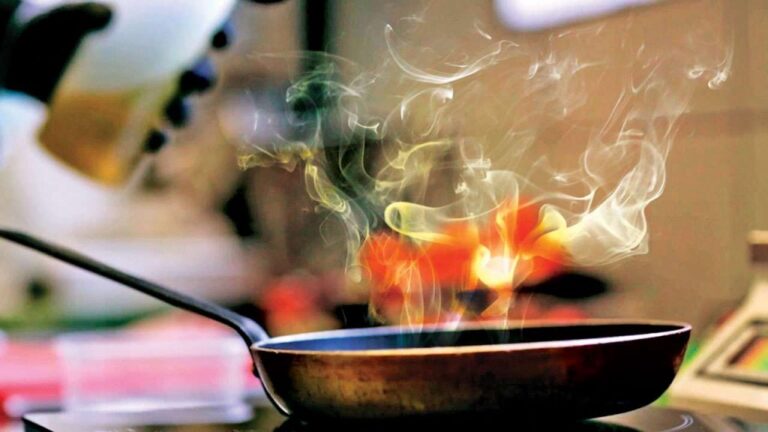Researchers from the National Oceanic and Atmospheric Administration (NOAA) have released findings from a multi-year study examining what they call “underappreciated sources” of urban air pollution. They focused on volatile organic compounds (VOCs) from cooking activities in three major cities: Los Angeles, Las Vegas, and Boulder. In this article we talk about: Are Your Favorite Recipes Harming the Environment? Experts Reveal Startling Truth About Cooking Pollution.
What Did the Study Find?
The researchers measured human-caused VOCs related to cooking over several years. They found concerning levels of these compounds, especially in dense urban areas like Los Angeles and Las Vegas.
“If you can smell it, there’s a good chance it’s impacting air quality,” the researchers explained. Many of the unidentified VOCs they discovered turned out to be from cooking fumes.
“We kept seeing a specific class of compounds called long-chain aldehydes in urban areas that we couldn’t attribute to vehicles, wildfires, agriculture or other known sources,” said lead author Matt Coggon.
Las Vegas, which has an extremely high density of eateries, showed persistent air quality issues. The researchers estimated that cooking activities accounted for around 21% of all VOCs present in the city’s outdoor air on average.
Levels in Los Angeles and downwind in Pasadena were also concerning. Overall, the team concluded that air pollution from cooking is drastically underestimated. It likely accounts for up to 25% of all VOCs in some urban regions.
Indoor Risks
Restaurant kitchens vent these cooking fumes outside, impacting outdoor air quality. But within homes, the indoor concentration of these compounds is even higher, especially in smaller spaces.
The team summarized that “air pollution from cooking is vastly underestimated and could account for nearly a quarter of VOCs in urban areas.” Without proper ventilation, indoor pollution can be dangerously high in homes as well.
Why This Matters
Many cities struggle to meet air quality standards and protect public health. To make effective policies, lawmakers need accurate emissions data from all sources. Without measuring pollution from restaurants and household cooking, they lack crucial information.
“It’s crucial to have the full picture of emissions and sources to help policymakers understand the effectiveness of their decisions,” Coggon emphasized. Identifying cooking as a major source of air pollution is the first step toward managing this previously ignored issue.
What’s Next?
More research is needed to clarify health impacts of chronic exposure to cooking fumes. But this groundbreaking study makes it clear that some favorite home-cooked meals may carry previously hidden environmental and health costs.
As researchers continue quantifying this concern, consumers may want to improve kitchen ventilation, choose cleaner cooking methods, or simply cook outdoors. Small sacrifices at home can result in cleaner air for everyone to enjoy. I sincerely hope you find this “Are Your Favorite Recipes Harming the Environment? Experts Reveal Startling Truth About Cooking Pollution” article helpful.

Julio Figueroa is a seasoned chef with over 12 years of experience in fine dining. He holds a degree in Culinary Arts from Le Cordon Bleu and is passionate about culinary innovation. As the lead contributor to chefdecuisinelosangeles.com, Julio shares his expertise and unique recipes with food enthusiasts. Connect with him on Instagram for more culinary inspiration.

